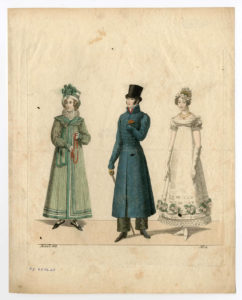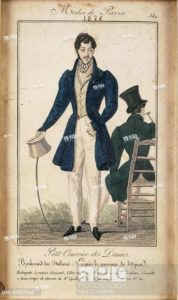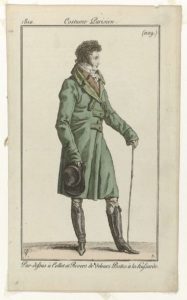This fortnight (July 31st 2019) marks my 200th fashion and style column for the fabulous and inspiring Weekender Herald. I can’t believe it’s been eight years since I wrote my very first column. And after all these years I still love bringing fashion and style tips to my lovely loyal readers.
Let’s look at what the girls and guys were doing ‘stylewise’ 200 years ago in the early 19th century.
Following the French Revolution (1799) the defined class system through dress was abandoned including the style and fabrics used. For women, the fashion was now moving towards a more simple, practical and elegant one. As we entered into the 19th century, France lead women’s fashion while England lead men’s trends with the fine wool industry.
This period in fashion is referred to as the ‘Empire Style’ due to its basis on neoclassical designs by the Greeks and Romans.
The biggest influence of dress during this era were images of Greek and Roman ancestors.
‘’Neoclassical architecture is an architectural style produced by the neoclassical movement that began in the mid-18th century. In its purest form, it is a style principally derived from the architecture of classical antiquity, the Vitruvian principles, and the work of the Italian architect Andrea Palladio’’.
I’m fascinated at the extent fashion was viewed and clothing was designed in this era. A far cry from the modern ‘fast fashion’ culture we live in today.
And some things just keep coming back again and again – at the end of the French Revolution (1799) another trend of the day was the military ‘look’. This had a strong influence during this time as the military ‘look’ in coats was taken from the soldiers uniform.
Women’s Wear…
From 1800-1820 dresses became slightly more structured with padded hems and firmer fabrics, such as twills and taffeta. Soft colours returned to the clothing world after a ten-year absence. Sleeves were fuller at the shoulder and high waists endured throughout this period but lowered slightly over the following years. And skirts hems also widened slightly while trimmings were used extensively.
Men’s Wear…
This period for men saw the final abandonment of lace, embroidery and other embellishments from serious men’s clothing outside of formalized court dress. It would, however, reappear in the 1880s and it’s successor, the ‘Young Edwardian’ look of the 1960s. Instead, cut and tailoring became much more important as an indicator of quality. This transformation can be attributed in part to an increased interest in antiquity stemming from the discovery of classical engravings, including the Elgin Marbles. The figures depicted in classical art were viewed as an exemplar of the ideal natural form, and an embodiment of Neoclassical ideas. Therefore, in the 18th century, dress was simplified and greater emphasis was put on tailoring to enhance the natural form of the body.
As seen in http://www.weekenderherald.com.au/









